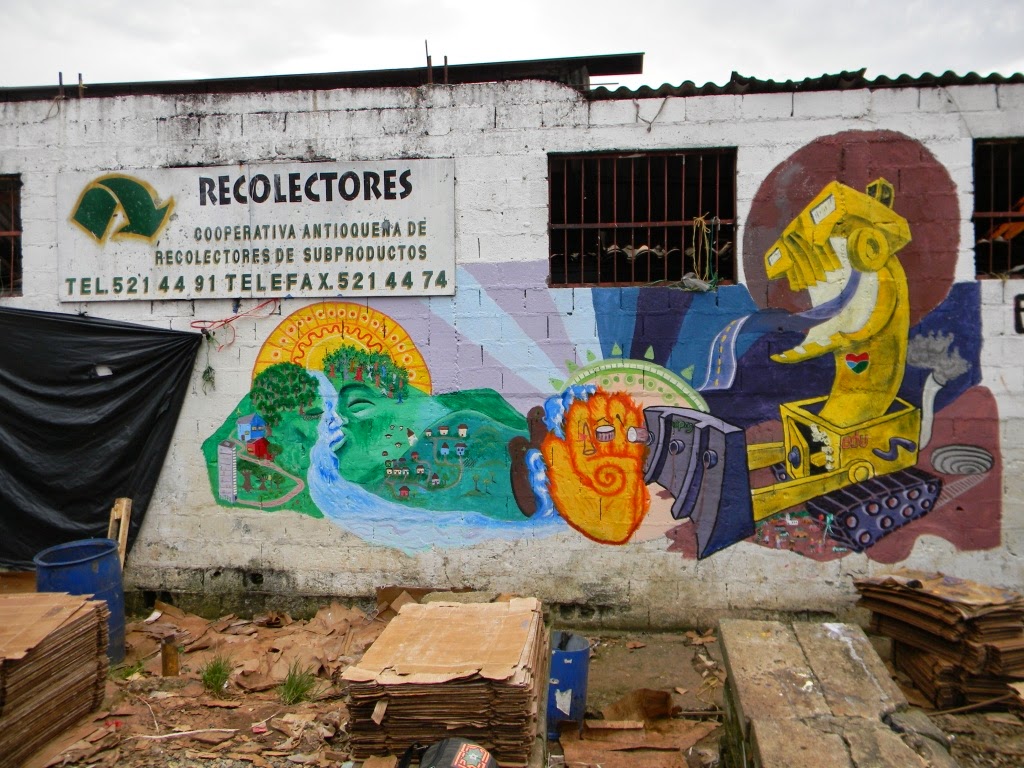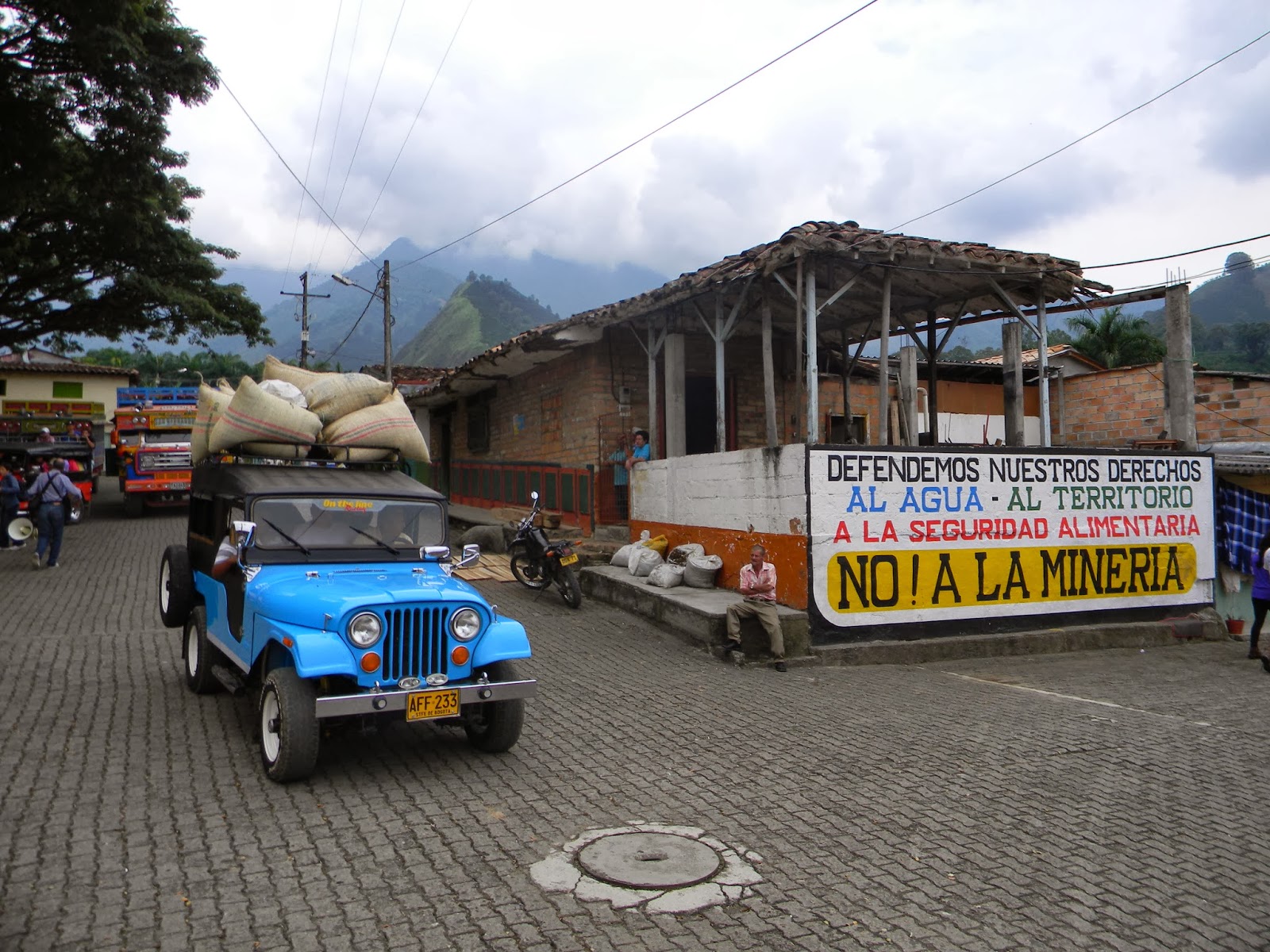 After our time in Farallones, we
little Bees quickly took off on a tour of Medellin to share our new graphics
campaign, Mesoamérica Resiste. We were able to do a variety of presentations: a
spontaneous one at the National University, a presentation in the Barrientos Plaza
at the University of Antioquia organized by the Libertarian Social and Cultural
Center, and one at the Museum of Antioquia as part of Contraexpediciones. Also as part of Contraexpediciones
we presented the Mesoamérica Resiste and Plan Colombia graphics at an event called
Intermundos:
Cartografias al acecho.
After our time in Farallones, we
little Bees quickly took off on a tour of Medellin to share our new graphics
campaign, Mesoamérica Resiste. We were able to do a variety of presentations: a
spontaneous one at the National University, a presentation in the Barrientos Plaza
at the University of Antioquia organized by the Libertarian Social and Cultural
Center, and one at the Museum of Antioquia as part of Contraexpediciones. Also as part of Contraexpediciones
we presented the Mesoamérica Resiste and Plan Colombia graphics at an event called
Intermundos:
Cartografias al acecho.  For two weekends in a row we participated
in mural projects with the Inter-Neighborhood Working Group of Disconnected
Peoples, Ríos Vivos Antioquía, and the Action Network against
Extraction. The first weekend we did a collectively made mural, commemorating
Ana Fabricia Córdoba for the Day
against Police Brutality and for the Dismantling of Riot Police (ESMAD).
The next weekend we spent two days painting at the Antioquian Cooperative of
Collectors of Byproducts in the neighborhood of Puerto Nuevo in the Comuna 4. The making of this
mural was the kick-off event for a month of activities as part of the 4th
National Effort in Defense of Territories.
For two weekends in a row we participated
in mural projects with the Inter-Neighborhood Working Group of Disconnected
Peoples, Ríos Vivos Antioquía, and the Action Network against
Extraction. The first weekend we did a collectively made mural, commemorating
Ana Fabricia Córdoba for the Day
against Police Brutality and for the Dismantling of Riot Police (ESMAD).
The next weekend we spent two days painting at the Antioquian Cooperative of
Collectors of Byproducts in the neighborhood of Puerto Nuevo in the Comuna 4. The making of this
mural was the kick-off event for a month of activities as part of the 4th
National Effort in Defense of Territories. 
While working on the second mural, we learned more about how gentrification is impacting different parts of Medellín, and how so-called development and progress can devastate marginalized communities in big cities as much as in rural areas. The Urban Development Company of Medellin (known as EDU) is building the Madre Laura Montoya Upegui Bridge over the Medellin River to connect the comuna 4 with comuna 5. This project is already displacing people from the neighborhoods of Puerto Nuevo, La Herradura, and Pasaje Villa. The housing rights of many people who live in this area aren't being recognized and many are being left without compensation.

Supposedly they are going to relocate the Cooperative and other people and groups in this area, but up until now there have been no guarantees of anything. What abounds instead is uncertainty, and abandoned houses that are already being destroyed in a neighborhood where families are still living.
The mural was designed using a methodology similar to what we used in Farallones, where people of all ages from the participating organizations worked in teams to create sketches, and afterwards chose the concepts that were most representative of all the sketches that were created.

The mural not only shows the problems of urban development and mining and energy projects, but also examples of how rural and urban communities can be more livable, healthy, and ecological for their inhabitants.
This time with our ant and bee friends in Medellin was short, but we hope that sooner than later we can return and continue dreaming, painting, and creating a colorful, lively, and animated resistance to this poor excuse of progress that only displaces and destroys, in its desire to impose manufactured landscapes on top of communities and territories.























































